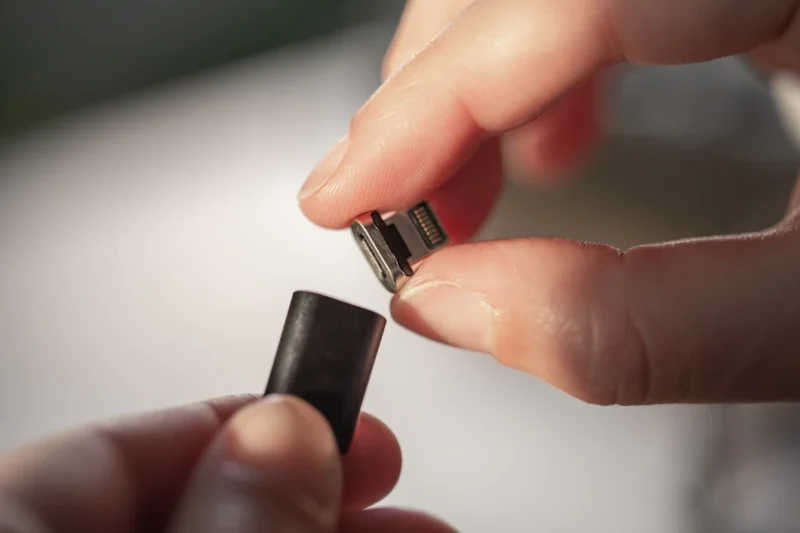USB-C has been a new standard in the past few years, and more and more devices are adopting this connector. With that said, it can be hard to find a cable with the right power rating for your device. Now, USB Type-C cables will come with power ratings on them so you know what to expect from the cable before you purchase it.
USB Type-C cables will now come with Power Rating logos on them. This is to help consumers identify the best cable for their device.
The USB Type-C interface has been updated with the new USC Type-C 2.1 specification. The formal specs have been released, with the ability to provide power to devices being the most significant improvement. The new USB Type-C 2.0 Power Delivery standard sends 240 Watts of power via the connector, up from the previous 100 Watts.
Brad Saunders, Chairman of the USB-IF (Implementers Forum), explains why this change was required. “One hundred watts has fulfilled a lot of functions,” he says, “but there are industries that might benefit from additional power, such as gaming laptops or even a docking station that can distribute more power to the devices attached to it.”
This is a significant development for future gadgets, since lugging bulky power adapters will be obsolete. By foregoing proprietary barrel adapters in favor of the tiny and elegant port, manufacturers can keep the machine’s profile low.
Consumer electrical gadgets that previously needed power adapters, such as televisions, computers, and entertainment systems, will shortly migrate to the new standard. The day is approaching when these gadgets can be manufactured ultra-thin while yet being very powerful. This is the vision that technological behemoths have and are actively pursuing when it comes to designing and manufacturing updated consumer devices, and it will soon become a reality.
Docks, for example, will benefit from this new standard since they will be able to transfer more power to connected devices, which was previously an issue due to high-powered gadgets causing power bottlenecks and choking.
With the adoption of USB generation 4 power delivery, further updates to the standard will be possible, allowing for even greater power supply via the cable and interface, resulting in household appliances and industry-leading equipment using it. This standard will actually link the globe by establishing a single accepted standard for all purposes.
This progress is made possible by a new kind of cable known as the EPR (Extended Power Range). This cable has a greater voltage rating than other USB Type-C Power Delivery cables, delivering 48 Volts to pump 240 Watts of power at the same 5 Amps of current as other USB Type-C Power Delivery cables. With the introduction of this new cable type, USB Type-C cables have been divided into two categories:
- EPR (Extended Power Range) cables are a kind of cable that can handle a lot of power.
- Cables with an SPR (Standard Power Range) rating.
The conventional 60 Watt cable, which only provides electricity at 3 Amps, will be classified as an EPR cable, whereas the former 100 Watt cable, which provided power at 5 Amps, will be classified as an SPR cable. The EPR cables and the new standard will be backwards compatible with older interfaces, ensuring that all generations of devices are compatible.
Devices, cables, and adapters that have embraced the new standard will be tagged and labeled with the IDs listed above, making them readily distinguishable from their predecessors.
The new standard will be applied to new versions of devices produced in the fourth quarter of 2024, around December and January 2024, with the aim of mainstreaming the standard by the first quarter of 2024.
Businesswire and USB.org are the sources for this information.


